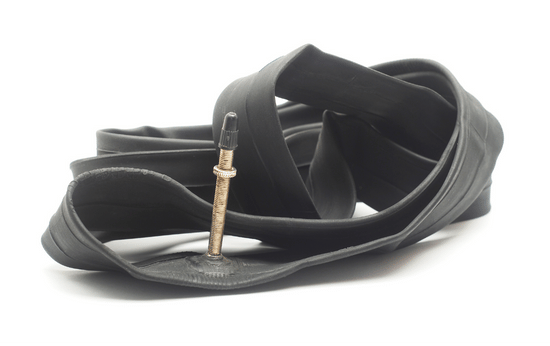
Properties and Overview of PIB (Polyisobutylene)
Overview:
 PIB (Polyisobutylene) is a versatile synthetic rubber valued for its impermeability, flexibility, and resistance to chemicals and weathering. As a unique elastomer, PIB is widely used in applications requiring durability and airtightness, such as sealing, adhesives, and protective coatings. Its low permeability to gases and excellent stability make it a critical material in the automotive, construction, and packaging industries.
PIB (Polyisobutylene) is a versatile synthetic rubber valued for its impermeability, flexibility, and resistance to chemicals and weathering. As a unique elastomer, PIB is widely used in applications requiring durability and airtightness, such as sealing, adhesives, and protective coatings. Its low permeability to gases and excellent stability make it a critical material in the automotive, construction, and packaging industries.
Production:
The production of PIB involves the polymerization of isobutylene, often with small amounts of isoprene, to enhance properties for specific applications. The polymerization process is carried out under controlled low-temperature conditions using cationic catalysts, which result in a linear, highly stable molecular structure. PIB is available in various grades, ranging from low molecular weight for adhesives and lubricants to high molecular weight for rubber and sealing applications.
Applications:
PIB's unique properties make it indispensable across a range of industries. In the automotive sector, PIB is used in inner tubes, tires, and fuel system components due to its gas impermeability and resistance to heat and chemicals. The construction industry employs PIB in roofing membranes, sealants, and waterproofing systems, where its weather resistance ensures long-term performance. In the packaging sector, PIB is a critical component in food-grade cling films and flexible packaging, providing a protective barrier against moisture and gases. Its tackiness and flexibility make PIB a preferred adhesive choice, especially in pressure-sensitive and hot-melt formulations. Additionally, PIB is used as a viscosity modifier in lubricants and greases, where its thermal stability and lubricity improve product performance.
Summary:
Polyisobutylene is a highly adaptable elastomer that combines impermeability, flexibility, and resistance to environmental factors. Its wide-ranging applications and ability to meet the demands of diverse industries make it a cornerstone material in modern engineering and manufacturing. As sustainability and innovation shape material science, PIB remains essential to driving reliability and efficiency across automotive, construction, packaging, and industrial applications.
See a comprehensive list of electrical, mechanical, physical and thermal properties for PIB (Polyisobutylene) below:
Electrical Properties of PIB (Polyisobutylene)
| Electrical Property (Units) | Value |
|---|---|
| PIB (Polyisobutylene) Dielectric Constant at 'Standard Temperature and Pressure' | 2.0 to 2.2 |
| PIB (Polyisobutylene) Electrical Breakdown Voltage at Atmospheric Pressure (kV/mm) | ~10 to 15 |
| PIB (Polyisobutylene) Electrical Conductivity (S/m) | 1.00E-15 to 1.00E-13 |
| PIB (Polyisobutylene) Electrical Resistivity at Room Temperature (25°C) (Ω·m) | 1.00E+13 to 1.00E+15 |
| PIB (Polyisobutylene) Magnetic Property | N/A |
| PIB (Polyisobutylene) Superconducting Transition Temperature (K) | N/A |
| PIB (Polyisobutylene) Temperature Coefficient of Resistance (°C⁻¹) | Unknown |
Unfamiliar with a property? Click it's description to be given a full definition in the GLOSSARY
See properties and overview for
ALLOYS and CHEMICAL ELEMENTS
popular in engineering
Require different units not displayed?
CONVERT VARIOUS UNITS HERE
Mechanical Properties of PIB (Polyisobutylene)
Unfamiliar with a property? Click it's description to be given a full definition in the GLOSSARY
See properties and overview for
ALLOYS and CHEMICAL ELEMENTS
popular in engineering
Require different units not displayed?
CONVERT VARIOUS UNITS HERE
Physical Properties of PIB (Polyisobutylene)
| Physical Property (Units) | Value |
|---|---|
| PIB (Polyisobutylene) Boiling Point at Atmospheric Pressure (°C) | Decomposes |
| PIB (Polyisobutylene) Chemical Composition (Element %) | (C4H8)n |
| PIB (Polyisobutylene) Cost ($/kg) | 2 to 4 |
| PIB (Polyisobutylene) Density at 'Standard Temperature and Pressure' (kg/m3) | 910 to 930 |
| PIB (Polyisobutylene) Glass Transition Temperature at Atmospheric Pressure (°C) | -60 to -70 |
| PIB (Polyisobutylene) Melting Point at Atmospheric Pressure (°C) | ~170 |
| PIB (Polyisobutylene) Polymer Family | Thermoplastic |
| PIB (Polyisobutylene) Refractive Index | ~1.51 |
| PIB (Polyisobutylene) Specific Gravity | 0.91 to 0.93 |
| PIB (Polyisobutylene) Viscosity at Melting Point (mPa·s) | Unknown |
Unfamiliar with a property? Click it's description to be given a full definition in the GLOSSARY
See properties and overview for
ALLOYS and CHEMICAL ELEMENTS
popular in engineering
Require different units not displayed?
CONVERT VARIOUS UNITS HERE
Thermal Properties of PIB (Polyisobutylene)
| Thermal Property (Units) | Value |
|---|---|
| PIB (Polyisobutylene) Coefficient of Thermal Expansion (µm/m·K) | 100 to 200 |
| PIB (Polyisobutylene) Emissivity Coefficient | ~0.9 |
| PIB (Polyisobutylene) Specific Heat Capacity (J/kg·K) | ~2000 |
| PIB (Polyisobutylene) Thermal Conductivity (W/m.K) | 0.12 |
| PIB (Polyisobutylene) Thermal Conductivity (BTU/h·ft·°F) | 0.07 |
Unfamiliar with a property? Click it's description to be given a full definition in the GLOSSARY
See properties and overview for
ALLOYS and CHEMICAL ELEMENTS
popular in engineering
Require different units not displayed?
CONVERT VARIOUS UNITS HERE
 ADDED TO MY FAVORITES!
ADDED TO MY FAVORITES! REMOVED FROM MY FAVORITES!
REMOVED FROM MY FAVORITES!